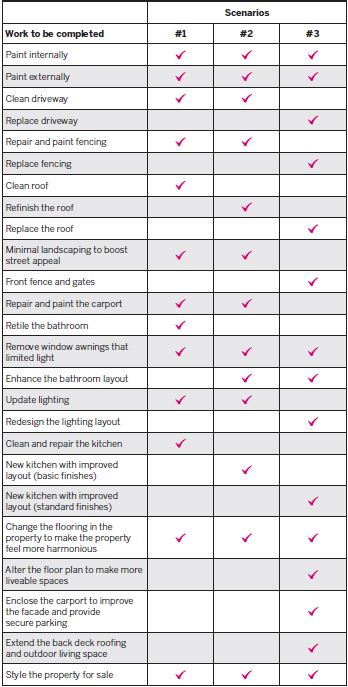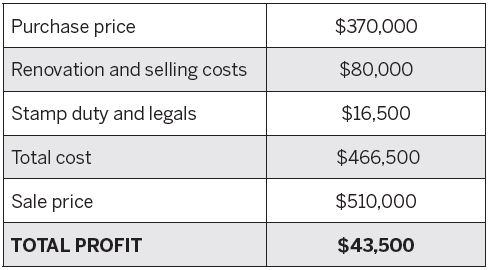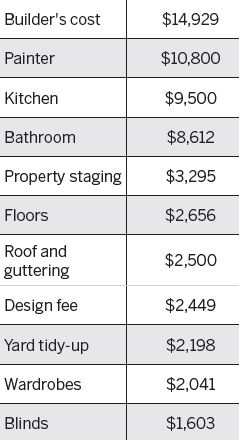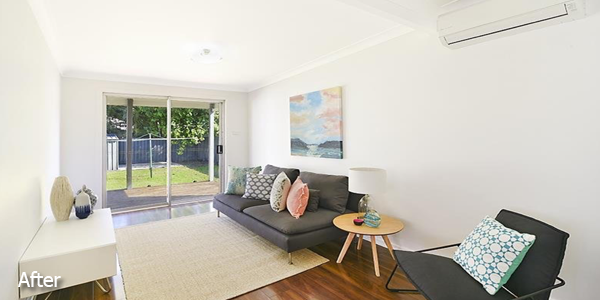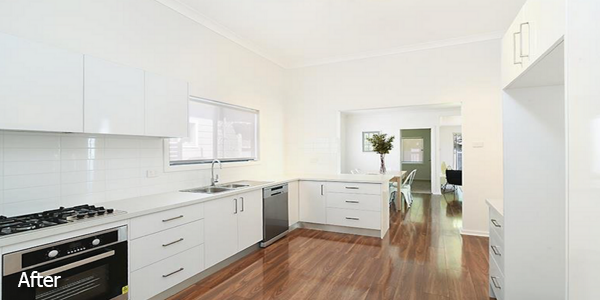How would you like to collect a $40K+ property renovation profit? Rapid Renovation Expert Naomi Findlay shares her story about how she did exactly that.
How would you like to generate a 5-figure profit on your next property renovation?
Well, that’s exactly what happened to our Rapid Renovation Expert, Naomi Findlay. She purchased a property in Newcastle, renovated it, and generated a 5-figure profit in the process.
So, how did she do it?
In this post, we’ll focus on the three key steps that Naomi implemented to make the project successful – which was featured in the October 2016 issue Your Property Investment Magazine.
Let’s start by taking a look at the background of the property.
THE PROJECT
The Property
Recalling her first impressions on the property, Naomi said: ‘the property would have originally been a gun barrel miner’s cottage that serviced this industrial town’s steel city workforce in the early 1900s. I find these properties are such a joy to work on as they have so many redeeming features that buyers are so keen to secure.’
But her excitement also came with a challenge.
The Challenge
Naomi said, ‘this is a great example of there being multiple options to take into consideration for the renovation plan, and the challenge was to determine the sweet spot where the profit from the project would be the greatest.’
So what steps did she implement?
THE 3-STEP PROCESS
Step 1: Unlock The Property’s Renovation Potential
The first thing Naomi did was to assess the property’s renovation potential. Now, for those who want to renovate for wealth, know that this process is very important because it allows you to spot a property’s ‘diamonds in the rough’ and to come up with a plan to ‘polish’ them.
What’s The ‘Renovation Potential?’
When you’re looking at the possible ways to generate the most profit from renovating a property, you’re assessing its renovation potential.
And to identify the property’s renovation potential, Naomi employed a series of standardised steps as follows:
First, she identified the things that need to be renovated:
- A run-down exterior
- Very little street appeal
- No outdoor living space
- Highly neglected fences and yards
- Awkward spaces to furnish and live in
- A kitchen with virtually no pantry storage
- A poorly-built awning and an un-level and broken slab
- A combined laundry and bathroom, with a shower over a bath
Second, she identified the set of works that need to be completed.
After assessing the property’s renovation potential, Naomi moved on to the next step, and that’s finding a property’s renovation sweet spot.
Step 2: Find The Property’s Renovation Sweet Spot
Naomi defined ‘renovation sweet spot’ as the ‘renovation plan that yields the greatest potential return on the money invested.’
How Did Naomi Find The Property’s Renovation Sweet Spot?
First, Naomi thought about the possible ways to which she can approach the renovation process. From there, she created multiple renovation scenarios as shown below:
Notice in the table above that the first renovation scenario involves cosmetic renovation work; the second renovation scenario involves styling and repair, and the third renovation scenario involves replacement and enhancement.
Second, Naomi compared the potential renovation profit from each of the renovation scenarios by using this standard formula:
SP – BP – RC – HC = POTENTIAL RETURN
Where:
- SP – Post-renovation Sale Price
- BP – Buy Price
- RC – Renovation Costs
- HC – Hold Costs and Associated Fees and Duties
Here’s how the numbers look like:
By comparing the numbers she obtained from applying the formula for each renovation scenario, Naomi determined that the most profitable of them is scenario 2.
The Importance Of Using A Standard Formula
Naomi says that ‘using a formula accounts for the variables specific to the location, property and price point. This results in a renovation plan that will provide the best chance of returning the greatest profit from a project.’
Step 3: Implementing The Renovation Plan
This step is where the majority of the legwork happened. Looking back, you now see why it was important to assess the property’s renovation potential as well as identify the things that need to be done. Both contributed to the timely completion of the project.
THE RESULTS
As commented on by Naomi herself in the article, here’s how the renovation project turned out:
Street Appeal
“The street appeal of a property is often one of the areas where you can add significant value.
For a dramatic street appeal for this property, we replaced the front fence with a more traditional terraced garden bed. We also included cottage-style plants to soften the facade, and spray-painting the fences in one colour. Finally, we painted the property with a light and fresh palette, instantly increasing its street presence and perceived value.”
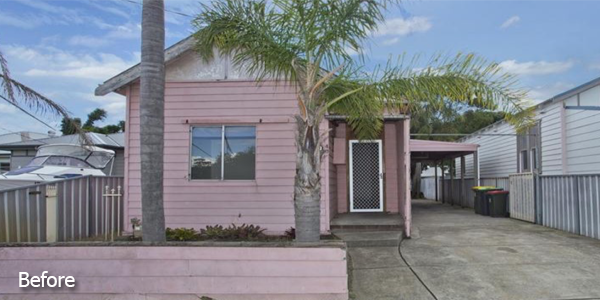
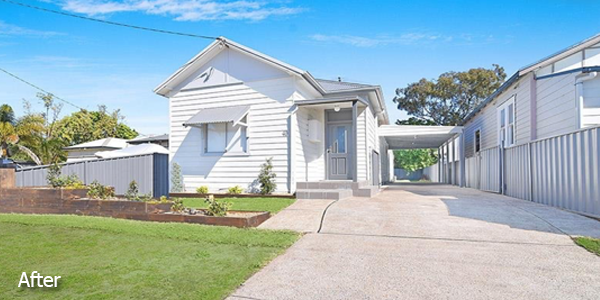
Image Source: Naomi Findlay
Flow and Harmony
“My first impression of the inside of this property was that it was the classic ‘box of Smarties.’ It featured strong, dated and extremely polarising colours. The floors varied throughout, and in some areas, the amazing original boards had been covered by out-of-date, damaged cork flooring.
In my opinion, when faced with multiple flooring types and varied subfloor materials, it’s best to go over the top. So in this project, an engineered timber floor was laid over the top of the existing floor to provide flow, harmony and to make the spaces feel larger.”
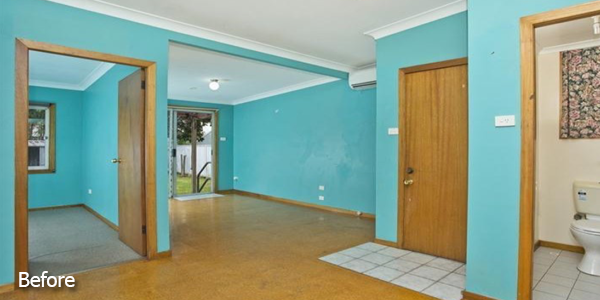
Modern Lighting
“In the main living area, we’re able to achieve a new level of finish by simply paying attention to the smaller details, such as changing out the light fixtures for inexpensive, timeless options. I also included a simple white transparent roller blind, which is a great way to freshen a space. The transparent roller lets in light, screens unwanted lookers and can minimise the impact of an out-of-date window.”
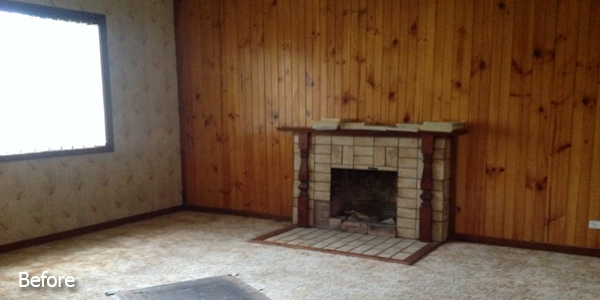
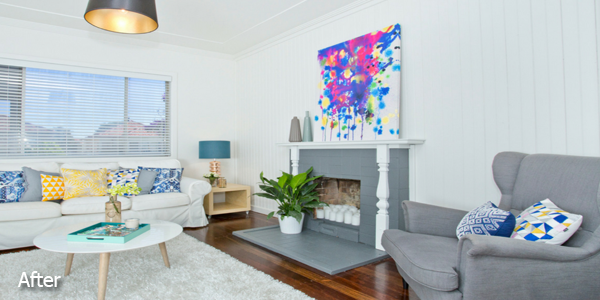
Image Source: Naomi Findlay
The Kitchen
“A non-functional and badly-presented kitchen becomes a property’s biggest! This kitchen had very little storage, a free-standing oven, no range hood, and no fridge space. To keep costs to a minimum, the plumbing and electrical locations remained in the original position and it was converted to a galley-style kitchen to allow for a full-size pantry, fridge space and more storage.”
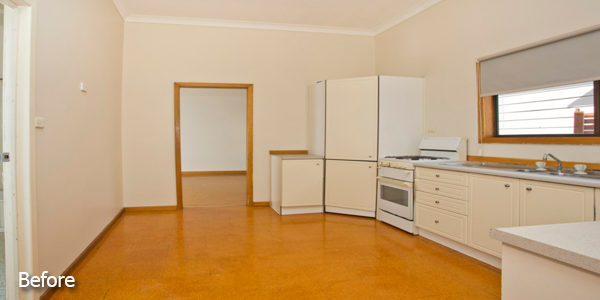
The Bathroom
“The bathroom layout stayed largely unchanged; so we optimised the space by moving the shower tapware towards the bathroom door. This way, we’re able to install a wet room instead of having the shower over the bath.
Prior to the renovation, the laundry sink and washing machine sat along the wall opposite to the bath; it was converted to a European laundry, with the washing machine and sink enclosed in a cupboard with bi-fold doors as the access point. This allowed the spaces to be separated from a floor planning and functional perspective.”
WRAPPING IT UP
HOME STAGING AND PROPERTY STYLING
Apart from the renovation works implemented, what other essential elements helped with the property’s market value? Naomi revealed two things: home staging and property styling.
She explained that, ‘it’s my experience that staging and styling a home for sale can increase the sale price by 10%, on average, and is especially important in a property like this one, that presented a challenging floor plan. Styling this project was imperative as the renovation plan did not allow for any floor plan changes. Hence, the secret weapon was styling, as it showed buyers how to live in the property within seconds of inspecting each space.’
The Property Renovation Library | The Property Renovation Video Hub



